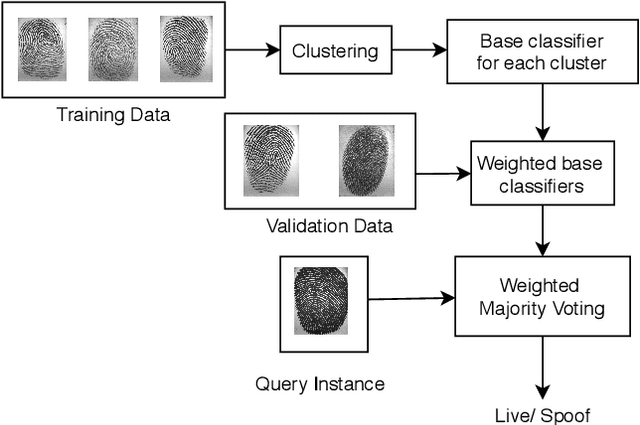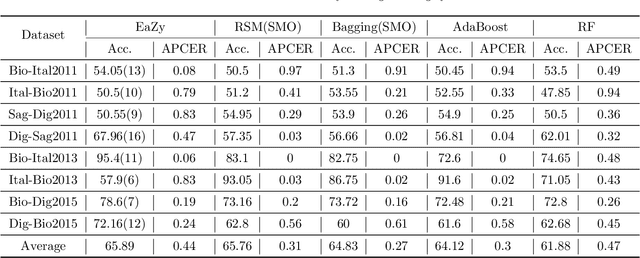EaZy Learning: An Adaptive Variant of Ensemble Learning for Fingerprint Liveness Detection
Paper and Code
Mar 03, 2021



In the field of biometrics, fingerprint recognition systems are vulnerable to presentation attacks made by artificially generated spoof fingerprints. Therefore, it is essential to perform liveness detection of a fingerprint before authenticating it. Fingerprint liveness detection mechanisms perform well under the within-dataset environment but fail miserably under cross-sensor (when tested on a fingerprint acquired by a new sensor) and cross-dataset (when trained on one dataset and tested on another) settings. To enhance the generalization abilities, robustness and the interoperability of the fingerprint spoof detectors, the learning models need to be adaptive towards the data. We propose a generic model, EaZy learning which can be considered as an adaptive midway between eager and lazy learning. We show the usefulness of this adaptivity under cross-sensor and cross-dataset environments. EaZy learning examines the properties intrinsic to the dataset while generating a pool of hypotheses. EaZy learning is similar to ensemble learning as it generates an ensemble of base classifiers and integrates them to make a prediction. Still, it differs in the way it generates the base classifiers. EaZy learning develops an ensemble of entirely disjoint base classifiers which has a beneficial influence on the diversity of the underlying ensemble. Also, it integrates the predictions made by these base classifiers based on their performance on the validation data. Experiments conducted on the standard high dimensional datasets LivDet 2011, LivDet 2013 and LivDet 2015 prove the efficacy of the model under cross-dataset and cross-sensor environments.
 Add to Chrome
Add to Chrome Add to Firefox
Add to Firefox Add to Edge
Add to Edge